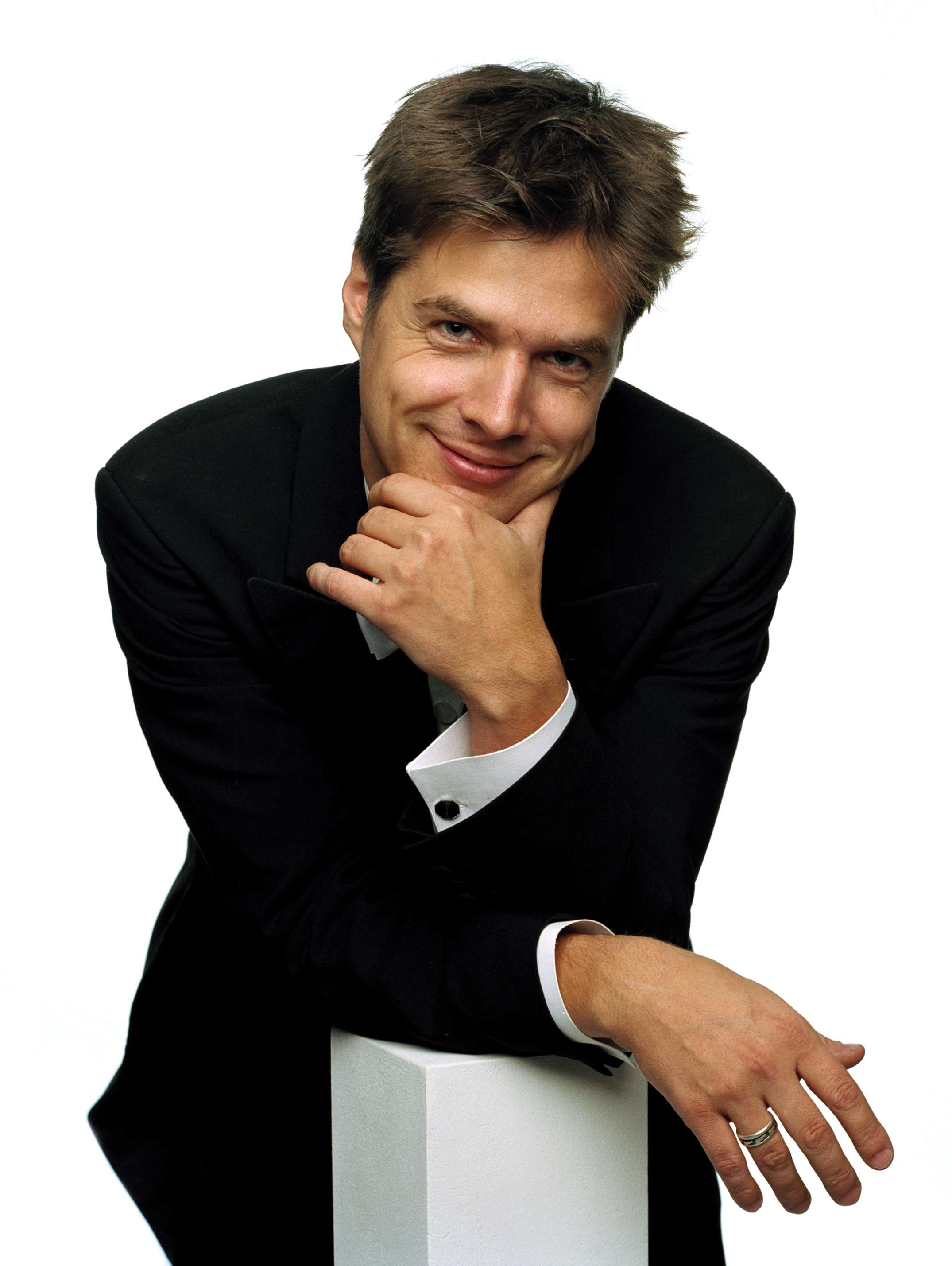|
Back
Half and Half Houston
Jones Hall
11/10/2011 - and Nov 12, 13*, 2011
Zhou Tian: A Thousand Years of Good Prayers
Franz Schubert: Mass No. 3 in B-flat Major, D. 324
Johannes Brahms: Symphony No. 2 in D Major, Op. 73
Elizabeth Keusch (soprano), Quinn Patrick (mezzo-soprano), Steven Tharp (tenor), Stephen Bryant (bass-baritone)
Houston Symphony & Chorus, Christoph Koenig (conductor)

C. Koenig (© Schmidt Artists International, Inc.)
Christoph Koenig's debut with the Houston Symphony, in a solidly executed but frustratingly interpreted program, introduced a strong musical talent to the city's audience. Koenig's conducting reveals a true personality, emphasizing rhythmic tautness, dynamic contrast and spritely tempos. While producing exciting results for most of the program, this interpretive stance proved one-dimensional by the end of the concert.
The first half of the evening was an unqualified success. Zhou Tian's attractive A Thousand Years of Good Prayers effectively communicated the goals of the composer, which he eloquently and succinctly described from stage. The simplicity of the piece's was what made it so appealing. The horns proclaim a disjunct melodic statement at the beginning of the work, featuring dissonant leaps and sharp dotted rhythms, and, over the ensuing ten minutes, Zhou proceeds to gradually smooth over these rough edges, ending in a serene cushion of string sound. Zhou's harmonic language and orchestration mix Ravel and Barber with a hint of his native China, albeit without the edgy grit of Chen Yi or flamboyant theatricality of Tan Dun. Still, the piece feels first and foremost like an honest musical utterance, which is important in today's day and age. Unabashedly tonal, with a true sense of tension and resolution, the arc of the piece convinces through and through. This is an impressive essay from a 30-year old composer, and Zhou Tian is certainly a compositional voice to watch. This was the one work where Koenig seem to bask in the sheer color of the orchestra, letting phrases linger nicely. The orchestra played with complete conviction and respect for a new score.
Zhou's good prayers were suitably answered by the magnificent, Mozartian third mass of Franz Schubert. This setting contains some of the most energetic and propulsive music that the composer even penned, notably in the Gloria, and Koenig's high energy stance, which never changed gear through the Schubert and Brahms, was more suited to the mass. The orchestra continued its impressive performance, with wonderful rhythmic precision from trumpets and timpani. The true stars, however, were soprano Elizabeth Keusch and the HSO Chorus. Keusch sang her high-lying part impeccably, with pinpoint intonation, luscious tone and ample agility, projecting nicely above the orchestra. There are a surprising number of treacherously high entrances for the soprano, but Keusch made them sound easy and elegant. Of the four soloists, she had the most to do, and took every advantage of her opportunity. The other three soloists also sang well, but Schubert gave Patrick almost nothing to do, and one wished for a bit more roundness of tone and projection from Bryant. Charles Hausmann's chorus, always a treat to hear, sang with incredible unity and balance, and were especially impressive in their handling of the denser contrapuntal passages. Diction was excellent, and the vigor of the singing matched Koenig's conception of the entire work. It is wonderful to have Schubert's masses, especially the less frequently heard early works, championed by the Houston Symphony.
Koenig's conception of Brahms' second symphony, while exciting on a visceral level, failed to convince overall. Tempos were all on the quick side, and one has to admire the orchestra's response to the speed. The end result had some passages sounding manic and most of the contrapuntal ingenuity lost. There were nice touches, to be sure. The observation of the exposition repeat in the first movement is a rarity nowadays, but Koenig was committed to it. This movement was the most successful. Koenig overemphasized the storminess of the second movement, which would have been more successful if there was equal emphasis on the mysterious and shadowy passages. The tempos of the third and fourth movements were simply too fast. The trios of the Allegretto grazioso, in particular, were lacking any sense of graceful lilt and sounded oddly like set pieces from a lost Tchaikovsky ballet. The finale started at an arrestingly quick pace and got faster and faster. The breakneck speed at the coda created a proto-Shostakovich anti-climax. Instead of a triumphant D major peroration focused on the final harmonic resolution of motivic material from the movement, the focus was shifted merely to speed and volume. Instead of a refreshing breath of clean, Alpine air, this seemed an interpretation aimed to satiate the hyperactive set.
If Koenig's conducting was only half successful, the orchestra and chorus were flawless throughout the concert. Wind solos in the middle movements of the Brahms were especially enjoyable, and the intonation of the entire wind and brass section was the finest it has been all season. Ensemble playing was also rhythmically secure. One missed having the first and second violins divided, especially since Brahms plays on this orientation many times, but that is only a minor complaint.
Marcus Karl Maroney
|